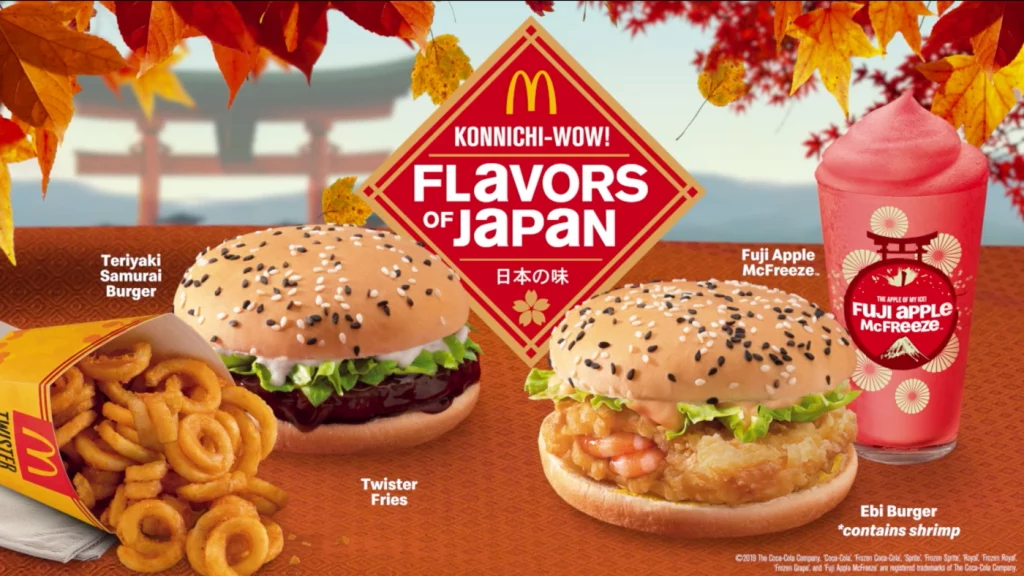
Marketing localization empowers businesses to establish a genuine connection with their target customers, fostering trust and loyalty while ensuring that their marketing efforts are not just understood but genuinely appreciated in each unique cultural context.
Read on as we explore the best practices that enable businesses to connect with audiences on a deeper level, drive engagement, and ultimately, thrive in the global marketplace.
Overview
- What is marketing localization?
- Key marketing localization strategy steps
- Challenges of marketing localization
- Brands that nailed their marketing localization strategy
- Localize with POEditor
What is marketing localization?
Marketing localization is the process of adapting marketing strategies, content, and campaigns to effectively engage with and resonate with a specific target audience in a particular geographic or cultural market. It goes beyond mere translation and involves a comprehensive understanding of the local nuances, preferences, values, and behaviors of the target audience.
The ultimate goal of marketing localization is to create a highly personalized and relevant marketing experience that feels native to the local audience, thereby driving brand awareness, customer engagement, and business growth.
Why localize your marketing efforts?
Research shows that 9 out of 10 people say that they would disregard a product if it is not available in their native language. And according to the The Localized Social Marketing Benchmark Report, the majority of user engagement, specifically 72%, and brand-related impressions, totaling 66%, occur on Facebook location pages rather than on corporate pages.
Key components of marketing localization include language translation that goes beyond words to convey cultural context, adapting visual elements such as imagery and design to align with local aesthetics, tailoring content to address local needs and concerns, and adhering to local laws and regulations.
Whether it’s adjusting advertising campaigns to coincide with local holidays, embracing cultural symbols and traditions, or even rebranding to better connect with the local market, marketing localization is a dynamic and strategic approach that acknowledges and respects the diversity of global audiences.
Key marketing localization strategy steps

Conduct market research
Market research is a critical foundational step in developing a successful marketing localization strategy. It involves gathering and analyzing information about the target market to make informed decisions about how to adapt your marketing efforts. Start by clearly defining the geographic location(s) and demographics of your target audience.
Determine the primary language(s) spoken in the target market and any relevant dialects; multilingual marketing is necessary in some cases. Segment the market based on demographics, psychographics, and buying behavior to tailor your marketing efforts more effectively.
Delve into the local culture by studying the customs, traditions, and values of the target market. This includes understanding religious practices, social norms, and any cultural taboos that may affect your marketing approach. Identify consumer preferences related to product features, packaging, color choices, and symbolism that may vary in different cultures.
Surveys and focus groups can help you gather direct feedback from potential customers in the target market to understand their preferences, pain points, and expectations. Based on your research findings, allocate resources and budget for the localization effort. And remember to update and refine your market research ensures that your strategy remains relevant.
Be aware of cultural differences
Cultural sensitivity in marketing localization is a critical consideration for brands and businesses looking to expand their reach into new geographic or cultural markets. It involves understanding and respecting the unique cultural nuances, preferences, and values of the target audience in order to create marketing campaigns that resonate effectively.
It is advisable to collaborate with local experts, agencies, or partners who have a deep understanding of the local culture and market dynamics. They understand best the local society’s values and ethical considerations, especially when dealing with sensitive topics like gender roles, family dynamics, or social issues.
Comply to local laws and regulations
Compliance and legal considerations are critical aspects of marketing localization, especially when expanding into new geographic or cultural markets. Adhering to local laws and regulations is not only necessary to avoid legal issues but also to build trust and credibility with the local audience.
Understand data privacy laws and regulations related to the collection, storage, and processing of personal information. Compliance with GDPR (General Data Protection Regulation) in Europe or CCPA (California Consumer Privacy Act) in the U.S., for example, may be required.
Ensure that your marketing content is truthful, accurate, and not deceptive. Avoid making false claims or exaggerations about your products or services. If using comparative advertising (comparing your product or service to a competitor’s), do so transparently and without making false or misleading statements.
Localize language(s)
Language localization is a crucial aspect of marketing localization that involves adapting your marketing content, messaging, and communication materials to the language(s) spoken by your target audience in a specific geographic region. This process goes beyond mere translation.
The first step in language localization is translating your marketing materials into the local language(s). It’s essential to ensure that the translation is not only accurate but also culturally relevant. Adapt the tone and style of your content to match the local culture’s preferences. Some cultures may prefer formal and respectful language, while others may respond better to casual and friendly communication.
Some languages have regional dialects and variations. For example, Spanish spoken in Spain differs from Spanish spoken in Mexico or Argentina. Be aware of these differences and tailor your content accordingly. Local idioms, sayings, and expressions can greatly impact the effectiveness of your messaging. Consider using idiomatic expressions that resonate with the local audience.
The localization technology you may use to perform localization can include language service providers, translation tools like translation memory systems and terminology databases, and translation management systems such as POEditor. You may also need to implement content management systems that support multilingual content to streamline the localization process.
Localize all content
An important step involves adapting the substance and style of your marketing content to make it more relevant, relatable, and appealing to a specific target audience in a particular geographic or cultural context. Incorporate images, graphics, and visuals that are familiar and relatable to the local audience.
Explore the types of content that resonate with the local audience. Some regions may prefer video content, while others may engage more with written articles or infographics. And be aware of the cultural significance of colors, as they can convey different meanings in various cultures. Choose colors that are well-received in the local market.
Incorporate local narratives, anecdotes, or stories into your marketing content to make it more relatable and authentic. Make sure to adapt taglines and slogans to ensure they convey the intended message and resonate with the local audience.
To measure performance and see where you stand, it’s recommended to conduct A/B testing to compare the performance of localized content with the original content or content tailored for other markets.
Perform local SEO
Local SEO is crucial for businesses that serve specific geographic areas or have physical locations. Local SEO helps you connect with potential customers in your immediate vicinity when they search for products or services related to your business.
Identify local keywords and phrases that potential customers might use when searching for businesses like yours in your area. This includes city-specific and neighborhood-specific keywords. Consider targeting long-tail keywords that include location information (e.g., “best Italian restaurant in [city]”),if applicable to your business.
Create localized content that incorporates your target keywords naturally. This can include city-specific landing pages, blog posts, and service pages. Seek backlinks from local websites, news outlets, bloggers, and influencers to establish your authority within your community. A good way to earn backlinks is by contributing guest posts to local blogs and publications.
Other things you need to consider include claiming and verifying your Google My Business listing, ensuring NAP consistency, implementing schema markup (structured data) on your website, and mobile optimization, among others. Remember that local SEO is an ongoing process that requires consistent effort and monitoring.
Choose your marketing channels
Research and identify the social media platforms that are most widely used in the local market. For example, while Facebook and Instagram may be popular globally, platforms like Sina Weibo, TikTok (aka Douyin), and WeChat dominate in China. Explore video-sharing platforms, live streaming apps, and OTT (Over-The-Top) services that are widely used in the local market.
Collaborating with local influencers who have a strong presence and following in the target market can also help gain popularity in the local market. Work with influencers to co-create content that resonates with the local audience and leverages their authenticity and trustworthiness.
When it comes to email marketing campaigns, tailor them to include region-specific content, offers, and announcements that cater to the local audience’s interests and needs. Ensure that email communication is in the local language and respects cultural communication norms.
Test, analyze, improve
Run pilot campaigns or A/B tests to evaluate the effectiveness of your localized marketing efforts. Feedback from local customers can also help you understand how to adjust your strategy for better performance.
Track your performance by monitoring key performance indicators (KPIs) specific to your localized marketing efforts. Use analytics tools to gain insights into the effectiveness of your campaigns and make data-driven adjustments.
Remember that effective marketing localization is an ongoing process that requires a deep understanding of the target market and a commitment to staying connected with local consumers. Continuously update and refine your localization strategy based on performance data, market changes, and customer feedback.
Challenges of marketing localization
Marketing localization offers numerous benefits, such as improved customer engagement and expanded market reach, but it also comes with several challenges that businesses need to navigate effectively. Some common challenges of marketing localization include:
- cultural nuances
- language complexity
- consistency across markets
- regulatory compliance
- resource allocation
- time constraints
- crisis management
- adapting to change
Understanding and respecting cultural nuances is one of the most significant challenges. What may be acceptable and appealing in one culture may be offensive or ineffective in another. Brands must navigate the fine line between being culturally sensitive and creating relatable content.
Language translation is a fundamental aspect of marketing localization, but it’s not always straightforward. Different languages have unique grammar rules, idioms, and cultural references that can be challenging to translate accurately. Literal translations can result in misunderstandings.
While localizing marketing content, it’s essential to maintain a consistent brand image and message. Also, markets evolve, and consumer preferences shift. One needs to stay agile and adapting to changes in local markets is an ongoing challenge in marketing localization.
Handling unexpected issues or crises in foreign markets can be daunting. Brands need a crisis management strategy that accounts for cultural and regional sensitivities. Not only that but navigating local laws and regulations can be complex and requires ongoing monitoring and adaptation.
Overcoming these challenges requires a strategic approach, cross-functional collaboration, ongoing learning, and a commitment to understanding and respecting the diversity of markets and cultures. Effective marketing localization mitigates these challenges and unlocks the potential of engaging with a global audience on a meaningful level.
Brands that nailed their marketing localization strategy
The key to successful marketing localization lies in understanding and connecting with the local audience on a personal and meaningful level. Many famous brands have successfully implemented marketing localization strategies to connect with audiences in different parts of the world.
McDonald’s

McDonald’s has implemented various marketing localization strategies to adapt to different cultural and regional preferences around the world. The global fast-food chain adjusts its menu to cater to local tastes and dietary preferences. For example, in India, you get a range of vegetarian options, including the McAloo Tikki burger and the Veg Maharaja Mac. In Japan, clients are offered items like the Teriyaki Burger and the Ebi Filet-O (shrimp burger) to appeal to local flavors.
The company also adapts its advertising campaigns to resonate with local culture and traditions. They often feature local celebrities or incorporate local festivals and events into their marketing. The menus and signage are typically translated into the local language(s) to make it more accessible to customers. This includes adjusting pricing to local currencies.
Coca-Cola

Coca-Cola’s “Share a Coke” campaign is a prime example of successful marketing localization on a global scale. The campaign was first launched in Australia in 2011 and has since been adapted and implemented in numerous countries around the world. The company replaced its logo with popular names and terms of endearment in various languages.
To adapt to local markets, Coca-Cola customized the names on the bottles to include common names in each respective country. For example, in the United States, bottles featured names like “Michael” and “Jennifer,” while in Australia, it included names like “Kylie” and “Nathan.”
Coca-Cola translated the “Share a Coke” slogan and campaign materials into the local languages of each country. This ensured that the message was not only understood but also resonated with consumers in their native tongue. By personalizing their bottles, Coca-Cola engaged consumers on a personal level, encouraging them to share a Coke with friends and loved ones.
Starbucks

Starbucks, as a global coffeehouse chain, has implemented a robust marketing localization strategy to adapt its brand and offerings to the diverse cultures and preferences of markets around the world. While the company embraces localization, it ensures a consistent global brand identity. The core Starbucks experience, including the quality of coffee and service, remains the same across locations.
Menus, signage, and promotional materials are translated into the local languages of the regions where they operate. Websites and social media channels are localized for different regions, and content is adapted to suit local preferences and cultural norms.
The coffeehouse also offers localized menu items and beverages to cater to regional tastes and preferences. For example, in Japan, you can find matcha-flavored drinks, while in Italy, you might see espresso-centric options. Clients can also enjoy seasonal and limited-edition products that align with local holidays, festivals, and cultural events.
Localize with POEditor
POEditor is a user-friendly translation management system that can significantly assist with global marketing efforts. It provides a centralized platform where marketing and localization teams can manage their localization tasks. This includes storing, updating, and organizing translation strings from all digital assets in one place.
The platform allows you to create and maintain a glossary of key terms and phrases. This ensures consistent translation across marketing materials. It also uses a translation memory system to store previously translated content, helping translators maintain consistency and speed up the translation process.
POEditor can handle localization for multiple languages simultaneously, making it suitable for marketing campaigns targeting diverse global audiences. It supports a wide range of file formats commonly used in marketing, such as HTML, XML, JSON, and more, thus handling various types of content.
You also get quality assurance features, such as QA checks and proofreading capabilities, to ensure that translated content is accurate and consistent.
Summing it up
As we move forward, the role of marketing localization will continue to evolve, driven by advances in technology, changes in consumer behavior, and shifting global dynamics. It will remain an indispensable tool for businesses seeking to make their mark on the world stage while respecting and celebrating the richness of local cultures. In this exciting journey of global expansion, marketing localization stands as the compass that helps brands find their way to the hearts and minds of consumers worldwide.